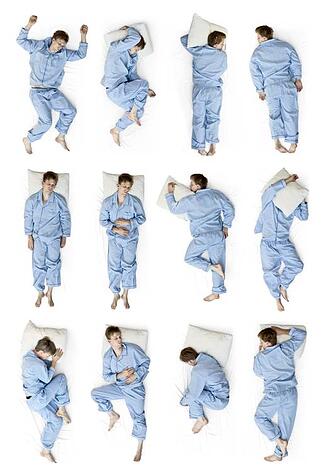 Sleep is one of the most powerful tools we have for staying healthy as we age. But for many of us, a good night’s sleep can be hard to come by. Changes in sleep patterns are a normal part of aging, but the good news is there are simple changes you can make to your routine to improve your sleep quality. Finding ways to move your body during the day is a great place to start.
Sleep is one of the most powerful tools we have for staying healthy as we age. But for many of us, a good night’s sleep can be hard to come by. Changes in sleep patterns are a normal part of aging, but the good news is there are simple changes you can make to your routine to improve your sleep quality. Finding ways to move your body during the day is a great place to start.
Why Movement Matters for Sleep
When you engage in physical activity, your body uses energy and experiences a slight rise in core temperature. As you cool down afterward, your body signals that it’s time to rest — helping you fall asleep faster. Exercise also reduces stress hormones, improves mood, and helps regulate your circadian rhythm. This movement doesn’t need to be high-intensity — a little activity throughout the day can lead to deeper, more restorative sleep.
The Best Types of Movement for Better Sleep
- Walking: A simple, low impact walk outside, through hallways, or on a treadmill is a great option.
- Stretching or Yoga: Gentle stretching can relieve muscle tension and help you relax.
- Strength Training: Building strong muscles supports mobility and helps reduce those nighttime aches and pains that can keep you awake.
- Group Fitness Classes: Exercising with friends keeps you motivated and helps you stay social. This can improve your mood and lower stress.
Timing Your Exercise
When planning your exercise, try to move your body earlier in the day or at least a few hours before bedtime. Evening exercise can still be beneficial but avoids very intense activity right before bed — it might leave you feeling too energized to fall asleep. For example – take a walk after dinner, stretch while talking on the phone, or do chair exercises while watching TV.
Pair Movement with a Relaxing Evening Routine
Once you’ve added movement to your day, set yourself up for a great night’s sleep by creating a calm environment before bed. Dim the lights, avoid screens for 30 minutes, and try a few minutes of deep breathing or gentle stretching to let your body know it’s time to wind down.
A more restful night often starts with an active day. Find small ways to add movement into your routine. Start with something simple — whether it’s a short walk, some stretching, or a fun fitness class — and you’ll enjoy deeper, more restorative sleep and wake up ready to make the most of tomorrow.


 Did you know? An ongoing lack of sleep or poor-quality sleep increases your risk of health problems such as cardiovascular disease, high blood pressure, diabetes, depression, and obesity.
Did you know? An ongoing lack of sleep or poor-quality sleep increases your risk of health problems such as cardiovascular disease, high blood pressure, diabetes, depression, and obesity.  Sleep is an essential need that the human body requires. It is vital for the infrastructure of good health. Not getting enough sleep can have a great effect on the body physically and mentally.
Sleep is an essential need that the human body requires. It is vital for the infrastructure of good health. Not getting enough sleep can have a great effect on the body physically and mentally. .jpg?width=394&name=GettyImages-962782170%20(1).jpg) I keep finding more and more news stories, magazine articles, social media ads, and even store displays that contain the words “Gut Health.” 10 years or more ago, you never heard that phrase anywhere, but now it’s all the rage. So, why all the buzz? Well, it turns out that research has linked gut health to a variety of functions in your body.
I keep finding more and more news stories, magazine articles, social media ads, and even store displays that contain the words “Gut Health.” 10 years or more ago, you never heard that phrase anywhere, but now it’s all the rage. So, why all the buzz? Well, it turns out that research has linked gut health to a variety of functions in your body.
.jpg?width=557&name=Raw%20Foods%20GettyImages-502130675%20(1).jpg)

 The benefits of regular activity for individuals throughout their lifespan is clear through the many (many, many) studies that outline how much movement is enough and which elements of health are improved with activity. However, despite the research, people in the U.S. still simply don't get enough activity to sustain health benefits, and
The benefits of regular activity for individuals throughout their lifespan is clear through the many (many, many) studies that outline how much movement is enough and which elements of health are improved with activity. However, despite the research, people in the U.S. still simply don't get enough activity to sustain health benefits, and 

 March is National Nutrition Month! It may be time to revisit and reestablish your New Year’s diet resolutions. I wanted to pass along a basic guide to healthy eating and lifestyle habits that can also be used for weight loss.
March is National Nutrition Month! It may be time to revisit and reestablish your New Year’s diet resolutions. I wanted to pass along a basic guide to healthy eating and lifestyle habits that can also be used for weight loss. 
 Have you ever woken up and felt like you never slept at all and could hibernate for weeks upon weeks? You know, it’s similar to that back-to-work Monday feeling. The average person spends one third of their life sleeping, so it may be good to consider your
Have you ever woken up and felt like you never slept at all and could hibernate for weeks upon weeks? You know, it’s similar to that back-to-work Monday feeling. The average person spends one third of their life sleeping, so it may be good to consider your 
 You know the feeling. The alarm clock is ringing and you're thinking, “If only I had one more hour to sleep.” Americans tend to lose about an hour of sleep per night (about two full weeks of slumber per year), pushing our bodies into
You know the feeling. The alarm clock is ringing and you're thinking, “If only I had one more hour to sleep.” Americans tend to lose about an hour of sleep per night (about two full weeks of slumber per year), pushing our bodies into